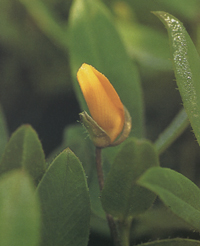Some Items we now have for sale
Enjoy alpaca socks year round, inside or out! This no-show stylish design has an alpaca terry loop knit sole for extra cushion. Reinforced Heel, Toe, and Arch-band for a proper fit. Hypo-allergenic, un-dyed, and odor resistant.
Contents: 80% Alpaca, 18% Nylon, 2% Lycra.
Care Instructions: Machine Wash and Dry, See Label
Colors: Fawn, Brown, Light Grey
$14.00 a pair
Alpaca Driving Glove w/ Leather Palm
+ Genuine Deerskin Leather Palm
+ Outer shell is knit from a bulky yarn made from soft U.S. Alpaca
+ Inner lining is our ultra-fine Bouclé style acrylic knit
These beautiful gloves are the latest addition to our product catalog and we couldn't be more excited with the finished result. We have taken the bulky outer shell and the soft inner lining from our best selling bouclé mittens and made a glove. With the deerskin leather palms, these gloves are one of our sharpest offerings!
Contents: Outer shell: 100% Prime Alpaca, Inner Lining: Bouclé Style Acrylic Knit, Palms: Genuine Deerskin Leather+ Outer shell is knit from a bulky yarn made from soft U.S. Alpaca
+ Inner lining is our ultra-fine Bouclé style acrylic knit
Colors: Lt. Fawn w/ Tan Palm, Brown w/ Tan Palm, Charcoal Grey w/ Black Palm
$80.00 a pair
Bouclé Lined Alpaca Mittens
Contents: U.S. Alpaca Outer Shell, Acrylic Bouclé Inner Lining
Colors: Heather Brown w/ Black Bouclé Lining
$45.00 a pair
All Terrain Gloves
Our mid-weight alpaca gloves will keep your hands warm during a wide range of outdoor activities! Alpaca's natural characteristics, it's semi-hollow core and moisture wicking properties, make it a great fit for gloves.
Contents: 90% U.S. Alpaca, 10% Nylon
Colors: Charcoal Grey, Fawn, Brown, White
$20.00 a pair
Radar MASH Hat
.
Designed after the hat Radar O'Reilly wore on M.A.S.H. Brim keeps the weather out of your face in the cold winter months. Ribbed knit style makes the hat softer inside and out. One size fits most.
Colors: Fawn, Brown, White, Charcoal Grey
$30.00

Snowflake Earflap Beanie
The Earflap Beanie combines Alpaca and Micro-Fleece to shield you from harsh weather conditions. The outer shell is 100% U.S. Prime Alpaca. The Micro-Fleece inner lining is very soft and warm. A great combination for the extreme outdoors. One size fits most.
Colors: Fawn, White, Brown, Charcoal Grey
$35.00
Snowflake Watch Cap
We combined our popular Snowflake Knit pattern with our classic knit cap. Lined with Innova, it's assured to be a winter classic keeping you warm and dry in the worst of winter.
One Size Fits Most.
Colors: White, Brown, Fawn, Charcoal Grey
$35.00

Survival Sock
Our Survival Sock is a terry loop lined mid-weight sock designed for a wide range of outdoor activities and climates. The soft alpaca terry loops are combined with a durable nylon outer shell. Reinforced foot arch band and a ribbed knit ankle support ensure a proper fit every time. This warm and comfortable sock is our best selling style across the country! Hypo-allergenic, un-dyed, and odor resistant.
2012 Improvement: Increased durability by adding extra re-enforcement across the entire sole of sock!
Contents: 78% U.S. Alpaca, 20% Nylon, and 2% Lycra.
Care Instructions: Machine Wash and Dry, See Label
Colors: Light Grey, Fawn, Brown, Charcoal Grey
$20.00
Ribbed Knit Scarf
Built for warmth! Matching knit style to our Radar M.A.S.H. Hats.
Colors: White, Fawn, Brown, Charcoal Grey
$30.00
Alpaca Mittens
Our Alpaca Mittens are made out of soft prime alpaca fiber and we couldn't be happier with the results. These mittens are soft and extremely warm!Contents: 100% Alpaca
Colors: Lt. Fawn, Brown
$25.00
Cable & Lace Scarf
Colors: Light Fawn, White and Dark Brown
$65.00
If you are interested in any of the above items send me an email to rrpacas@gmail.com. or you can go to our website www.rrpacas.com and send me a message that way.
We accepts cash, check, payapal, and credit cards.
















 The Perennial Peanut is a high-quality persistent tropical forage legume which can be grazed or fed to horses, dairy and beef cattle, hogs, goats, sheep, rabbits, Llamas and Alpacas. It can be stored as dry hay or silage, and is an ideal substitute for alfalfa. Florigraze and Arbrook cultivars of perennial peanut, or rhizoma peanut, as it is sometimes called, have been selected in Florida for their high yield, quality, persistence, disease resistance, and drought tolerance.
The Perennial Peanut is a high-quality persistent tropical forage legume which can be grazed or fed to horses, dairy and beef cattle, hogs, goats, sheep, rabbits, Llamas and Alpacas. It can be stored as dry hay or silage, and is an ideal substitute for alfalfa. Florigraze and Arbrook cultivars of perennial peanut, or rhizoma peanut, as it is sometimes called, have been selected in Florida for their high yield, quality, persistence, disease resistance, and drought tolerance. 













